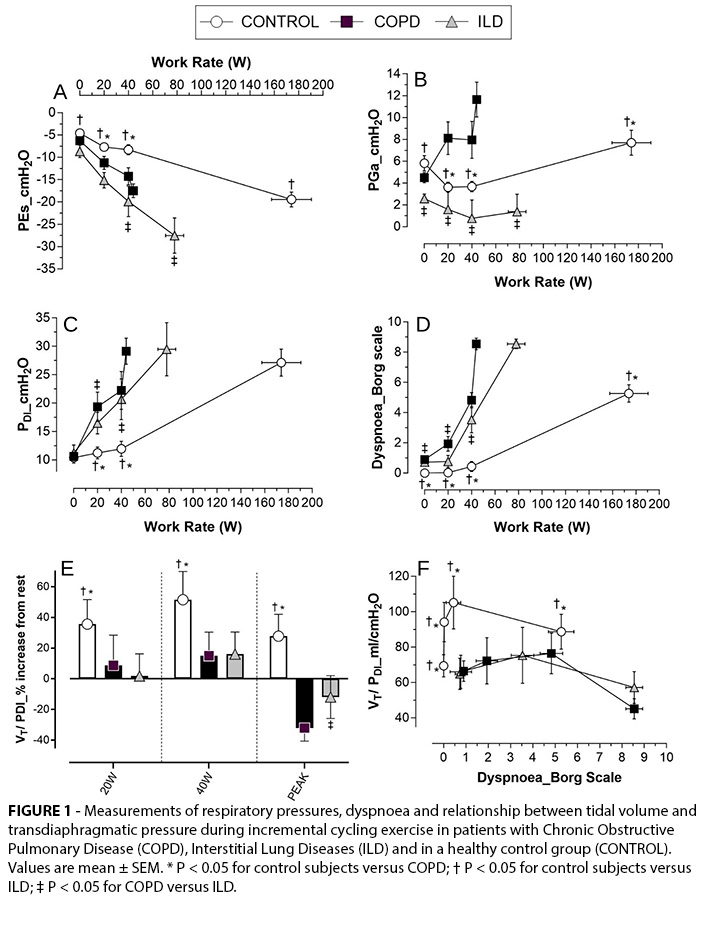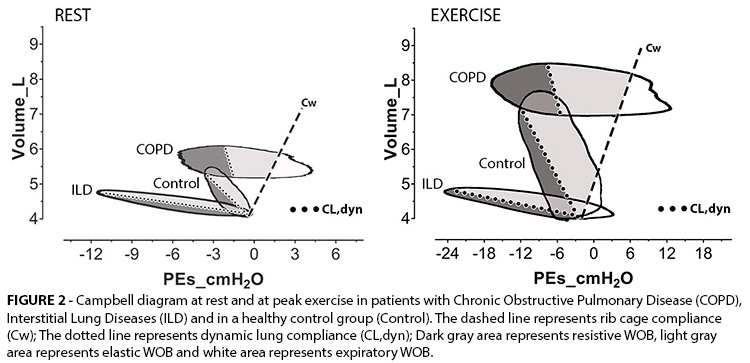Abstract
Introduction: Chronic respiratory conditions, such as COPD and ILD, frequently lead to exertional dyspnoea and a notable decline in quality of life.
Study Design: We compared respiratory muscle strength, respiratory pressures, work of breathing (WOB), and dyspnoea during incremental exercise in COPD, ILD, and healthy controls (n=20 each).
Results: Both diseases showed poor performance, with high values of transdiaphragmatic pressure (PDi) and WOB, but with different profiles. 1) In ILD, there was a higher increase in oesophageal pressure (PEs) and a lower gastric pressure (PGa), whereas in COPD, there was a significant increase in PGa. 2) In COPD, there was a greater increase in resistive and expiratory WOB, whereas in ILD, the elastic WOB was the most increased. 3) The neuromechanical inefficiency of ventilation was confirmed in both diseases (decrease in the Vt/PDi ratio).


Conclusion: COPD and ILD had reduced exercise performance and high breathlessness in face to increased values of diaphragm strength. However, the mechanisms of muscle recruitments differ between both respiratory diseases.